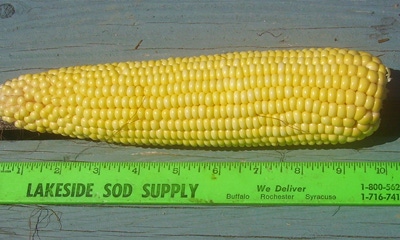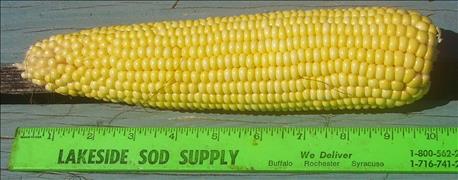September 8, 2016

The “An oh-so-sweet surprise” article [about discovering new genetic pathways] gave me a chuckle. It seems that it’s indeed true that what’s old is often new again.
This [photo] is of a Wapsie Valley open-pollinated variety over 150 years old. I was readying it to enter at the New York State Fair. It was thicker than most, well-formed with nice, straight rows — 20 of them.
Old-fashioned O-P corn has some advantages bred out of modern hybrids. It has less starch and more protein and fat, for one thing. That makes test weight much higher than modern corn. Being more palatable, it’s particularly suited as feed to produce beef and pork.

OLD-FASHION BRAGGING CORN: This open-pollinated ear has attributes that many a hybrid has lost.
True, it doesn’t do well at the high populations of modern corn. But larger ear size, nutrient content and weight tend to compensate for much of that.
It’s also the darling of organic producers. They can save their own seed and be assured it’s organic. My small 3-acre patch looks a lot better in this dry year in Onondaga County than many of my neighbors’ modern hybrids.
For many farmers, particularly small ones, it’s worth a good, long look. Don't take just my word for it. Take a look at openpollinated.com/testimonials.php.
Tom Andrews
Pompey, N.Y.
You May Also Like




